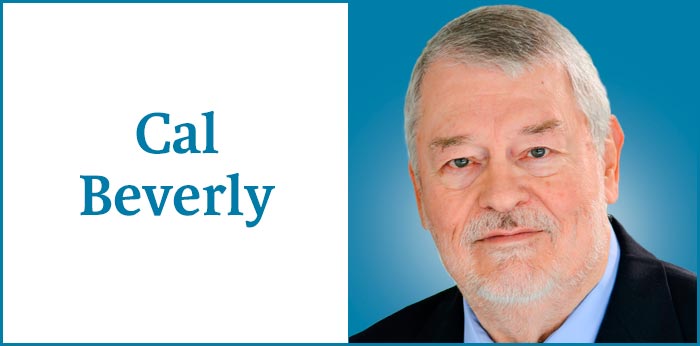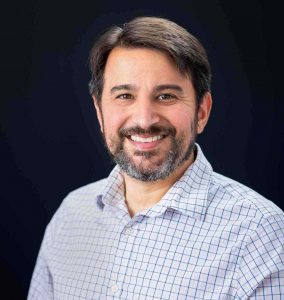OPINION — Quiz: Name the five villages of Peachtree City. The answers — and some questions — follow.
Let’s disclose my biases at the start. My first bias is that I believe that our elected City Council members and the staff of city employees have uniformly good intentions for the citizens of Peachtree City. I assume that each elected official and each city staffer is operating to do what each considers his/her duty on behalf of all citizens of Peachtree City. My bias is NOT to assume improper motives or bad faith. Remember that during the critique that follows.
Here’s another bias: I assume we each have blind spots, including this writer. And another: I assume that each of us can be mistaken, despite our good intentions. So this opinion piece is my personal take on the city I’ve called home for more than four decades.
Many of you moved to Peachtree City too late to see that unmissable sign at Ga. Highway 74 and Aberdeen Parkway announcing the official entrance to the city and directions to the main developer’s sales office. It stood for 20 years but in the 1990s was declared an impermissible commercial violation of the city’s sign ordinance.
It came down, but all around town signs signaled the entrances to some of the villages of one of the nation’s first planned cities: Aberdeen, Glenloch, Braelinn, Kedron and the newest name, Wilksmoor (for years just the West Village).
But look fast; the signs are disappearing. Nessie, the Glenloch’s reptilian symbol at Ga. Highway 54 and Peachtree Parkway South, is gone for good, according to the city. So is the Aberdeen sign at Peachtree Parkway North and Flat Creek Road. An errant driver knocked it off its base, and the city has decided not to replace it. (They’ll repave sections of Flat Creek Road twice within two months but won’t spend the few dollars to replace a historical marker.)
The five villages were central to the vision for the planned city back in 1959. “The city was planned to be developed into villages, each with its own shopping areas, recreational facilities, and elementary schools,” says the city’s official website.
The 1960’s rather utopian ideas of the early founders envisioned upwards of 80,000 residents within the city’s 24 square miles. That lasted until the first wave of residents in the 1970s said, “Whoa! That’s way too many. Scale it back.”
Planners listened and scaled it back in the 1970s to an anticipated buildout of around 45,000 residents. We’re at 35,000 and poised for another spurt on the west and east sides within a year or two. So any argument that refers to the “original” plan is outdated by events that discarded that first population goal more than 40 years ago.
An aside: I wrote a headline in 1982 that said the city’s plans at that time called for upwards of 9,000 apartments. It was still in the plan, but nobody had officially changed the original plan. That caused an uproar at a time there were fewer than half the city’s current population living here. In other words, the residents four decades ago rejected the original population targets.
Elected officials responded and downsized the buildout population by half, and later even added a moratorium on any multi-family rezonings without site-specific permission. The city’s village residents in 2019 still don’t like or want the density that a lot of today’s cities — and city planners — embrace. I could describe the 2019 emphasis on modern city planning this way: Build it high, pack ’em in and make ’em walk.
Now the central planners at City Hall have decided that the 60-year-old plan “needs modernizing” and want to add Millennial bait to the draws of a planned city. They refer to “public input” that supposedly suggests a “City Centre” is just what Peachtree City not only needs but absolutely must have if we are not to degrade into a tumbleweed infested shell of our former glory.
I suggest that City Hall is hearing what it wants to hear, rather than what the majority of city residents actually want.
Here I’m plagiarizing myself, from a column I wrote four years ago this month, titled “What is next for Peachtree City, the planned community?”:
“During the recent controversy about the Great Wolf Lodges water park venture into Peachtree City, public questions arose about the nature of the ‘plan’ underlying the development and future growth of Peachtree City.
“The City Council ultimately voted 5-0 against the rezoning and variance request that would have allowed the park to locate on the 38-acre campus of Dolce Atlanta-Peachtree hotel and conference center.
“However, from its introduction to city staff in October 2014 right up until a Planning Commission public hearing in February [2015], planning staff and three of the five council members clearly thought the project was a good fit for Aberdeen Parkway, as city emails clearly revealed.
“How did staff and council members misread so badly the public mood for a development that promised millions of dollars in tax receipts for local government coffers?
“We suggest the disconnect may be in how residents see their city versus how city staff and council members see the same landscape.
“We suggest that it may be — as the first George Bush infamously declared — ‘that vision thing.’
“Resident after resident in two public hearings and multiple emails told city officials that a tourist destination water park nestled next to several residential areas ‘was not what we moved to Peachtree City for.’
“But the emails among city staffers, some council members and Great Wolf officials suggested that such a development was a no-brainer. Councilman Mike King, after he voted with the 5-0 majority to kill the project, ominously warned residents that they could face a big box retailer in that location because of the general commercial zoning.
“The city was looking for more tax money for maintenance and upkeep of roads and cart paths and pay raises for city employees, and Great Wolf was the answer to those pressing needs.
“Residents saw the project as a degradation of the intent that underpinned the Peachtree City vision. Most dismissed the significant tax income from the new development.
“A council majority — notably minus Eric Imker and Kim Learnard — was concerned less about the ‘vision thing’ than their constituents were.
“But sober business types scratch their chins and advise that visions cost money, and that money has to come from somebody.
“These questions beg to be asked:
“1. Is the ‘vision’ of Peachtree City — a bedroom community with an industrial park and five ‘villages,’ each with its own commercial center, and each protected by strict zoning and buffers — still viable? Put another way, does the city’s ‘business model’ still work?
“2. If ‘yes,’ how will we pay for the continued maintenance of the Peachtree City vision?
“3. If ‘no,’ then what is the ‘vision’ that will supplant the old one, and how [and by whom] does that new vision get defined?
“4. If the answer is ‘partially, with modifications’ — which is likely the most realistic answer — is it not time to start having a completely public conversation about what that will look like?
“With two of the five council seats coming up for a vote this fall, candidates for those two seats — whether new faces or incumbents — have an obligation to spell out their visions for the future of the ‘Peachtree City Vision,’ including how to pay for it.”
Thus endeth the March 2015 editorial opinion.
Those questions are as pertinent today as when I asked them four years ago. And I think there’s still a disconnect between the majority of residents and the City Hall folks.
I suggest that four-and five-story apartment complexes masquerading as a “City Centre” are not what most residents want either. But I’m biased: The Aberdeen Village makeover plan is literally in my back yard, across North Lake Drive to the center where I walked for years to visit my barber and my dentist.
The disappearance of the village signs seems to me a symbolic portent of what our city leaders are pushing toward, whether they fully realize it or not.
And their good intentions, I believe, in this instance may harm more than help Peachtree City in the medium- and long-run.
So my biases — including my 42 years of living here and seeing councils and mayors and city managers come and go — are on full display in the following request.
Would you help the council and city staff before they make the same kind of mistake they almost made four years ago? Let’s encourage them to have the kind of “completely public conversation” that will set a high, intense, new and continuing standard of citizen input to guide those we pay to lead us.
You can reach all five council members, including the mayor, and the city manager, with this one email address: [email protected].
Tell them what you want for the place you call home. Like you did for the Great Wolf debacle, add your voice to their “surveys” and “public hearings.”
Specifically, question them concerning whether multi-story blocks of hundreds of apartments are suitable replacements for village retail centers.
Ask them to explain whether they have changed their minds about current language in their own ordinance, Section 1402: “The development of additional multifamily housing would create a significant burden on the police department and emergency and fire departments for the city; … would overburden area schools; … would exhaust available resources, thus reducing the quality of life now existing; and … would increase traffic congestion, which also reduces air quality.” Are they repudiating their own ordinance?
[Cal Beverly has been the editor and publisher of The Citizen since its founding in 1993. The first Peachtree City Council meeting he covered as a reporter was in the spring of 1982.]












Leave a Comment
You must be logged in to post a comment.